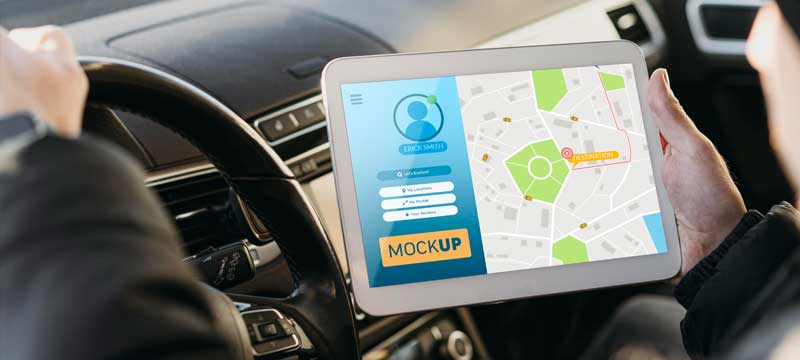In addition to theft prevention, vehicle tracking is most often used in logistics and transportation. These systems use GPS (Global Positioning System) and GSM (Global System for Mobile Communication) technology to provide accurate and constant location telematics to the individual fleet manager.
The systems are usually equipped with functions to view statistics such as fuel consumption, average speed, current driving time and location. Demand for this technology has increased significantly recently as EU regulations tighten restrictions on how long drivers can work each day. Working hours are currently limited to nine hours a day. Companies are required by law to install a tachograph in every vehicle that transports goods.
This obligation has encouraged fleet operators to try to reduce this potentially onerous duty and instead turn it into a benefit. Fleet management systems use GPS and GSM technology. Similar to other forms of trackers, however, they inherently have more detailed diagnostic capabilities. Other applications such as trailer tracking, fuel tracking, distance calculation, asset tracking and trips can be integrated into the fleet management solution.
Another application for GPS tracking systems is in the taxi trade. Here too, almost all vehicles are now equipped with a suitable tracking system - on the one hand for safety reasons, but on the other hand to be able to manage the taxi fleet as efficiently as possible. For example, a taxi tracking system can ensure that when an order is placed, the car closest to the customer is automatically dispatched to the customer. This saves the taxi company time and money.
Problems with GPS location
Vehicles and objects can also be located around the world using devices that combine a GPS system with mobile and/or satellite phone technology. Such devices are known as GPS trackers and differ from other GPS trackers in that they are powered by an internal battery and are not connected to the vehicle's battery.
The frequency with which the location of the device needs to be known or available will determine the quality, size or type of GPS tracker required. Since much of the world's goods are transported in intermodal containers, it is common for tracking devices to fail due to the Faraday cage effect. However, modern location technology has made advances in signal transmission that allow the reception of a signal of sufficient strength from the GPS satellite system, which can then be transmitted to terrestrial networks via GPRS.
What is the network coverage for GPS tracking?
Reliable GPS positioning can only work if the network coverage is even 100% - if the object to be located (eg a vehicle) has a stable connection with the satellite at each location.
Until a few years ago, the coverage of this network in Germany was uneven. But operators have improved over time and continued to expand coverage, so today there is good network coverage in Germany. However, this is not always perfect - there are still "blind spots", especially in rural areas.
In general, it can be said that there is sufficient network coverage for GPS positioning in Germany wherever mobile phones or smartphones have reception.
